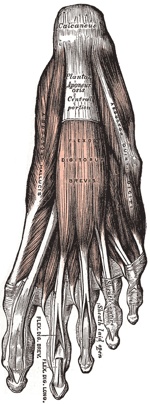 Most of the sports injuries I’ve had over the last year have been troubling but fairly easily and quickly remedied. Some have been long term problems that I was already aware of and have worked for months in the gym to try to fix, with much success. Very recently I’ve picked up my first connective tissue problem though, and that’s much more worrying. For runners the Achilles (or calcaneal) tendon probably has a bit of a stigma attached to it. It’s a top target for injury and can lead to serious problems.
Most of the sports injuries I’ve had over the last year have been troubling but fairly easily and quickly remedied. Some have been long term problems that I was already aware of and have worked for months in the gym to try to fix, with much success. Very recently I’ve picked up my first connective tissue problem though, and that’s much more worrying. For runners the Achilles (or calcaneal) tendon probably has a bit of a stigma attached to it. It’s a top target for injury and can lead to serious problems.
I’ve had some tightness of my plantar fascia (or aponeurosis) in both feet for weeks, and have been stretching them accordingly. It may be a result of my long bout of power and plyometric work, cutting back on my stretching routines and massage, a change in running style to push my centre of gravity forward, or just long term fatigue and degradation. The plantar fascia links the calcaneus (heel bone) and the anterior parts of the foot, such as the metatarsal bones. It acts to maintain the arch of the foot and is important in walking and running. If it shortens it will pull on the calcaneus.
The calcaneal tendon is also attached to the calcaneus, and is the insertion point for the muscles of the calf (gastrocnemius, soleus). My sports therapist and I are in the process of working out what’s going on in this part of my leg, but the calf muscles don’t seem particularly tight. I’m inclined to think that the tight plantar fascia is a cause of the calcaneal tendon pain, but there are other issues here such as a long-term problem with my tibialis posterior muscles. I haven’t increased my milage recently, I’ve been running 50-mile weeks for a few months now, but I’ve increased the length of my long runs.
Like most people with this sort of pain I have the typical early symptoms: pain midway between the heel bone and the muscle that disappears after running for 10 minutes or so, stiffness in the foot/heel/ankle first thing in the morning, and tenderness of the tendon when gently pinched between thumb and forefinger. The tenderness disappears sometime after running. The problem has been noticed early and doesn’t stop me running.
I’d intended to write about the decisions that must be made, but the anatomy lesson took over a bit. So, what should I do? It’s very easy to think that I can still run, that it doesn’t really hurt much, that it’s not affecting my gait, and that it’ll get better on it’s own. I don’t want to lose the planned mileage and speed work because then I might not meet my marathon goals.
But. Worst case scenario: I continue with my program, which is a tough program, the problem gets worse, becomes persistent, the tendon weakens, and I get to the point where I can’t start the marathon or the tendon becomes so weak that it snaps. I’m a connective tissue biologist. I know how poor connective tissues are at repairing themselves. Long term problems follow, with years of tendon problems ahead.
Ok, what’s the opposite end of that? I quit running and any training that stresses that tendon for 2 to 3 weeks, apply therapy religiously and reassess. It’s August now and the marathon isn’t until the end of October so I’d have plenty of time to get some fitness back if that strategy works, but I’m unsure of what I’d be able to achieve. The tendon would be strong again and probably as good as new, and I’d be able to train as hard as I like next year.
In the middle: I continue with my program, cut all speed work and hills, pay attention to this part of my body particularly after long runs, stretch everything (plantar fascia, gastrocnemius, soleus, tibialis posterior) 3 or more times a day after warming them up, before and after workouts, RICE after a run, get sports massages, and take extra days off running and replace with cycling. Reassess after 2 weeks to decide whether the problem is getting better, worse, or stays the same.
I’ve got 2 races in September but would happily jog those and enjoy the views. Luckily in my mind the marathon distance requires more distance preparation than speed preparation (although ideally I’d do both) so I think option 3 is the option I’ll take. If the problem doesn’t start getting better then I’ll look at option 2. My main aim now is to get the long runs done but turn up to the race with strong tendons. The 3 week taper should help with that and I’ll have 4 weeks of rest after the marathon to recover.
The main reason I’m running so much this year was to strengthen my legs and hips to avoid injuries in future triathlon years. My marathon goals have somewhat taken over now (although my legs, hips and core are indeed a great deal stronger now than last year).
Decisions, decisions. It’s not easy.